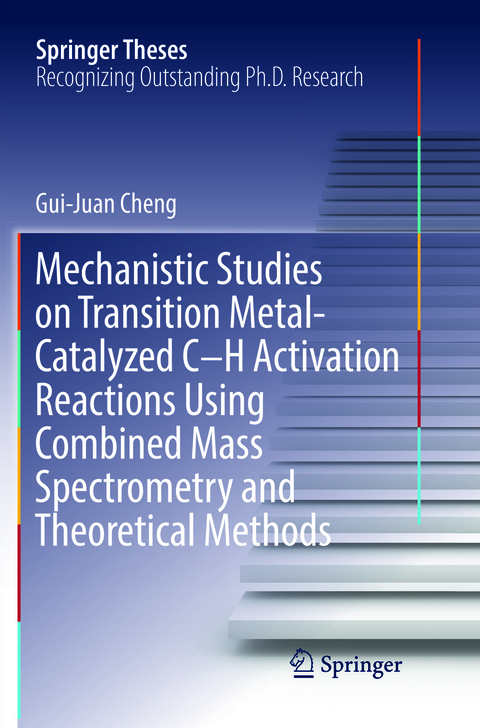
Mechanistic Studies on Transition Metal-Catalyzed C–H Activation Reactions Using Combined Mass Spectrometry and Theoretical Methods
Seiten
2018
|
Softcover Reprint of the Original 1st 2017 ed.
Springer Verlag, Singapore
9789811351570 (ISBN)
Springer Verlag, Singapore
9789811351570 (ISBN)
This thesis presents detailed mechanistic studies on a series of important C-H activation reactions using combined computational methods and mass spectrometry experiments. It also provides guidance on the design and improvement of catalysts and ligands. The reactions investigated include: (i) a nitrile-containing template-assisted meta-selective C-H activation, (ii) Pd/mono-N-protected amino acid (MPAA) catalyzed meta-selective C-H activation, (iii) Pd/MPAA catalyzed asymmetric C-H activation reactions, and (iv) Cu-catalyzed sp3 C-H cross-dehydrogenative-coupling reaction.
The book reports on a novel dimeric Pd-M (M = Pd or Ag) model for reaction (i), which successfully explains the meta-selectivity observed experimentally. For reaction (ii), with a combined DFT/MS method, the author successfully reveals the roles of MPAA ligands and a new C-H activation mechanism, which accounts for the improved reactivity and high meta-selectivity and opens new avenues for ligand design. She subsequently applies ion-mobility mass spectrometry to capture and separate the [Pd(MPAA)(substrate)] complex at different stages for the first time, providing support for the internal-base model for reaction (iii). Employing DFT studies, she then establishes a chirality relay model that can be widely applied to MPAA-assisted asymmetric C-H activation reactions. Lastly, for reaction (iv) the author conducts detailed computational studies on several plausible pathways for Cu/O2 and Cu/TBHP systems and finds a reliable method for calculating the single electron transfer (SET) process on the basis of benchmark studies.
The book reports on a novel dimeric Pd-M (M = Pd or Ag) model for reaction (i), which successfully explains the meta-selectivity observed experimentally. For reaction (ii), with a combined DFT/MS method, the author successfully reveals the roles of MPAA ligands and a new C-H activation mechanism, which accounts for the improved reactivity and high meta-selectivity and opens new avenues for ligand design. She subsequently applies ion-mobility mass spectrometry to capture and separate the [Pd(MPAA)(substrate)] complex at different stages for the first time, providing support for the internal-base model for reaction (iii). Employing DFT studies, she then establishes a chirality relay model that can be widely applied to MPAA-assisted asymmetric C-H activation reactions. Lastly, for reaction (iv) the author conducts detailed computational studies on several plausible pathways for Cu/O2 and Cu/TBHP systems and finds a reliable method for calculating the single electron transfer (SET) process on the basis of benchmark studies.
Introduction.- Mechanistic Studies on meta-C-H Activation Reaction.- Mechanistic Studies on MPAA-assisted meta-C-H Activation Reaction.- Mechanistic Studies on MPAA-assisted Asymmetric C-H Activation Reaction.- Mechanistic Studies on Cu-catalyzed sp3 C-H Cross-Dehydrogenative-Coupling Reaction.- Conclusions and Outlook.
| Erscheinungsdatum | 04.03.2022 |
|---|---|
| Reihe/Serie | Springer Theses |
| Zusatzinfo | 77 Illustrations, color; 18 Illustrations, black and white; XVII, 126 p. 95 illus., 77 illus. in color. |
| Verlagsort | Singapore |
| Sprache | englisch |
| Maße | 155 x 235 mm |
| Themenwelt | Naturwissenschaften ► Chemie ► Organische Chemie |
| Naturwissenschaften ► Chemie ► Physikalische Chemie | |
| Schlagworte | Asymmetric C-H Activation • Dehydrogenative Cross-coupling • density functional theory • Mass Spectrometry • Meta-C-H Activation |
| ISBN-13 | 9789811351570 / 9789811351570 |
| Zustand | Neuware |
| Informationen gemäß Produktsicherheitsverordnung (GPSR) | |
| Haben Sie eine Frage zum Produkt? |
Mehr entdecken
aus dem Bereich
aus dem Bereich


